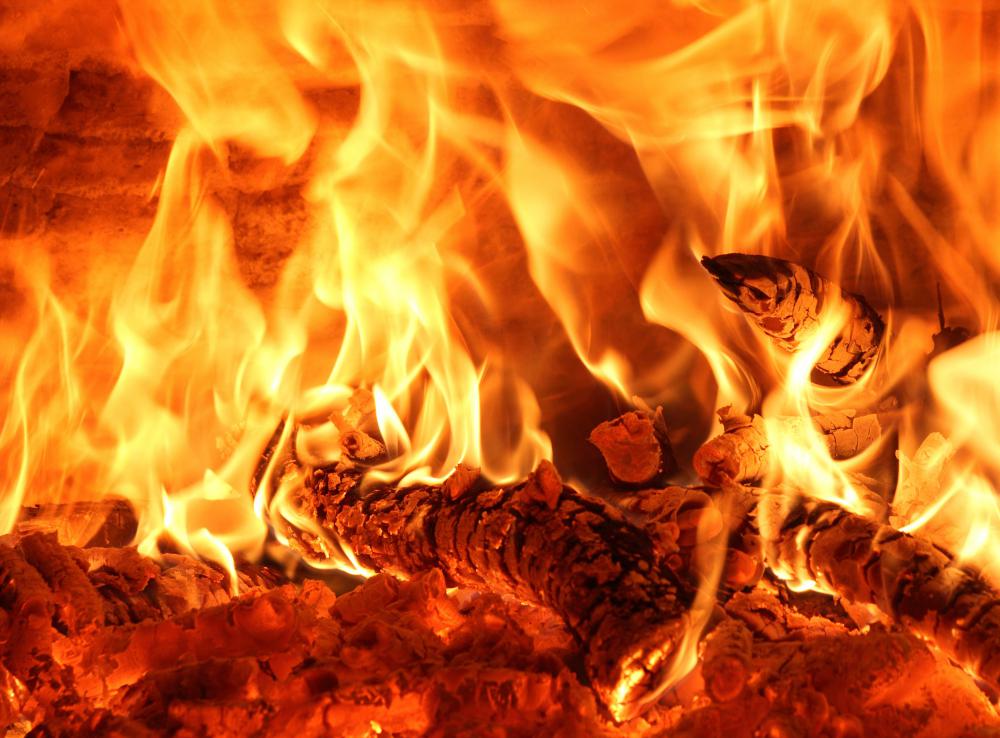At AllThingsNature, we're committed to delivering accurate, trustworthy information. Our expert-authored content is rigorously fact-checked and sourced from credible authorities. Discover how we uphold the highest standards in providing you with reliable knowledge.
What Is a Pig Nut Hickory?
A pig nut hickory, or pignut hickory, is a type of hardwood deciduous tree. A member of the Juglandaceae, or walnut, family, its scientific name is Carya glabra. It is one of the more common types of hickory across its range, which is primarily the Eastern United States, and very small areas of Southern Canada on the Ontario peninsula. Pig nut hickory trees, while fairly common, are not especially numerous, usually making up a minor fraction of the total number of trees in the regions where they are found. The trees, which can grow to be fairly large, have commercial value as well as substantial value as a food source for wildlife and livestock, particularly swine, which is the source of its common name.
The leaves of the pig nut hickory are compound, with glossy, dark green leaflets that are grouped in clusters of five. The leaves are oblong, pointed, fairly broad, and have very finely serrated edges. Each group of five, or occasionally seven, leaves is arranged at the end of a stem with two, or three, opposing pairs and a single apex leaf. The grey bark is smooth in young trees but gradually becomes cracked and rough, older trees having bark with vertical furrows and ridges. Older, mature trees often reach around 80 feet (24 m) or more in height.

The wood of the pig nut hickory, which is usually found in mixed hardwood forests, often with oak and other hickory species, is very durable and flexible and is used for a variety of wood products like tool handles and athletic gear. It is used for lumber and is favored as a firewood for heat, cooking, and smoking foods. The nuts, which are encased in both an outer husk and an inner shell, are eaten by many types of animals and are favored by pigs, which led to early American colonists and settlers to name the tree the pig nut hickory. To humans, the nuts are bitter, and while they are edible, are not generally considered a worthwhile food source.
At least three subspecies of pig nut hickory are recognized, and hybrids with other hickory species are sometimes found, which can make positive identification of this tree somewhat challenging. It also has several other common names, such as sweet pignut hickory, swamp hickory, broom hickory, and false shagbark hickory that are used in local areas. Pig nut hickory trees are quite adaptable and can thrive under a variety of conditions. They are often found along ridgelines in poor, dry soils but can also colonize low lying areas with fairly wet soil. They cannot tolerate very arid or swampy conditions.
Frequently Asked Questions
What is a Pig Nut Hickory?
A Pig Nut Hickory is a deciduous tree native to Eastern North America, recognized by its smooth gray bark and compound leaves. It produces pear-shaped nuts encased in thin husks, which are a food source for wildlife. This tree is valued for its hard, dense wood and is often used in tool handles and furniture.
How can you identify a Pig Nut Hickory tree?
To identify a Pig Nut Hickory, look for its compound leaves with 5 to 7 leaflets, gray bark with scaly ridges, and pear-shaped nuts. In the fall, its leaves turn a golden yellow. The tree typically grows 50 to 60 feet tall and thrives in well-drained soils, often found in mixed hardwood forests.
What wildlife benefits from the Pig Nut Hickory?
The Pig Nut Hickory serves as a valuable food source for various wildlife, including squirrels, chipmunks, and birds. Its nuts are rich in fats and proteins, crucial for animals' winter survival. Additionally, the tree provides habitat and nesting sites for many species, contributing to biodiversity in its native ecosystem.
Is the wood of the Pig Nut Hickory tree useful?
Yes, the wood of the Pig Nut Hickory is highly prized for its strength, toughness, and elasticity. It's commonly used for products requiring durability, such as tool handles, sporting goods, and furniture. Its wood is also excellent for smoking meat, imparting a distinct flavor, and is a preferred choice for wood-burning stoves due to its high calorific value.
Can you eat the nuts from a Pig Nut Hickory?
While the nuts from a Pig Nut Hickory are edible, they are not as palatable as other hickory nuts due to their bitter taste. They are more commonly consumed by wildlife than humans. However, some people do harvest and use them in recipes after leaching out the bitterness through various processing methods.
How does the Pig Nut Hickory contribute to its ecosystem?
The Pig Nut Hickory plays a significant role in its ecosystem by providing food and shelter for wildlife, contributing to soil fertility through leaf litter, and offering shade that helps regulate the microclimate. Its deep root system also helps prevent soil erosion, making it an important species for maintaining forest health and diversity.
AS FEATURED ON:
AS FEATURED ON:











Discuss this Article
Post your comments